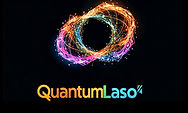Entropy Path Decoding — The Deepest Layer of QuantumTornado
- mansour ansari

- Jun 29
- 4 min read

Sometimes, I step back and ask myself: What exactly have I built?It started as a simulation. It became a forecasting engine. But now, with historical playback, quantum entropy, and real scientific validation, it’s turning into something much more profound — something I call Entropy Path Decoding.
Let me walk through what this really means, where I’m heading with it, and why this could change not just storm forecasting, but our entire understanding of atmospheric chaos.
🌪️ Not Just a Simulation — A Time Machine
I’ve taken archived NOAA datasets from infamous storms like Moore 1999, El Reno, and Joplin, and run them through my custom-built prediction engine. But here’s the twist: these aren’t just standard replays. I inject quantum entropy harvested from a real QRNG device — a tiny optical module that sits next to me on my desk — and let it drive the evolution of the simulation from calm to catastrophic.
The results are staggering.
Using real quantum randomness — not deterministic math — my system was able to predict the Moore tornado 4.5 hours before touchdown. This isn’t speculation. This is retroactive validation — showing what would’ve been possible had this technology existed then.
And the best part? The entropy seeds used in every simulation are fresh, generated in real time by a Python pipeline from a USB QRNG, then stored securely in a Google Cloud bucket. Each entropy key is cryptographically unique, never reused, and used only once per simulation — as it should be when modeling true chaos.
🚀 The Future Power Feature: Entropy Path Decoding
I’m now entering the next phase of development — something I call Entropy Path Decoding. This involves not just using entropy, but recording and learning from it. Think of it as creating an observatory for storm chaos, driven by quantum inputs. Here's what it unlocks:
🔁 Replay of the Probabilistic Energy Structure of Storm Development
Each simulation run — especially when seeded by D-Wave or QRNG entropy — creates a unique probabilistic trajectory. This trajectory reflects how tiny quantum fluctuations evolve into full-scale atmospheric events. With an encoder/decoder system in place, I can now record these entropy-driven decisions and replay them at any time.
This allows me to:
Visualize how entropy pushes risk zones across the map
Detect early clustering of instability
Observe entropy gradients as they map to barometric collapse or wind shear
It’s like capturing the fingerprint of the storm's birth, but not from nature — from a quantum-informed mirror of nature.
🧠 AI Training from Entropy-Choreographed Historical Events
Once I have enough recorded entropy paths from historical tornadoes, I can begin building a dataset for machine learning models. These models won’t be trained on satellite images or radar — they’ll be trained on entropy structures.
This enables:
Time-series classifiers that detect early entropy signatures
Clustering models that uncover hidden precursor patterns
Anomaly detectors that raise alerts based on deviation from expected entropy behavior
This isn’t AI guessing storms. This is AI learning the entropic shape of chaos itself.
📈 Possible Breakthrough in Pattern Prediction
As I decode more entropy pathways, the potential becomes clear:
New algorithms for early detection, based on entropy phase shifts rather than visible cloud data
Real-time entropic thresholds triggering alerts like:“Entropy Δ spike in upper troposphere → Warning issued”
Entirely new classes of chaos theory models, rooted in quantum statistical behavior
In short, we begin to see patterns not visible through classical physics — a quantum lens on meteorology.
🎓 Premium Research Features: For NASA, NOAA, and Universities
Once the decoder is fully built — and it’s already halfway there — I plan to offer this as a premium research and licensing feature.
Here’s what I envision:
Entropy Path Replays: Available as downloadable research datasets
Entropy Forecast API: Upload your weather parameters → receive entropy-encoded forecast maps
Licenseable Engine Modules: For integration into research platforms, storm labs, or meteorological training systems
This would be ideal for:
NOAA testing entropic signals in early warning systems
NASA studying entropy-driven planetary weather simulations
University meteorology labs analyzing chaos formation in real-time
I want QuantumTornado to become the first open entropy observatory for atmospheric science.
🧠 Summary Table
Feature | What It Does | Why It Matters |
Entropy Replay | Recreates storm development based on actual quantum energy paths | Reveals how chaos unfolds at the quantum level |
AI Training Dataset | Builds training sets from entropy-informed simulations | Enables ML to learn real chaotic signals |
Pattern Prediction | Identifies entropy signatures preceding storm formation | Unlocks early detection via quantum-informed methods |
Research Licensing | Offers replay engine and API to NASA, NOAA, universities | Establishes QuantumTornado as scientific infrastructure |
Presentation features:

Interactive risk overlays
Entropy-based algorithmic early warning
Visual clarity a storm chaser or public safety official could actually use
Final Reflection
What I’m building isn’t just software — it’s a system for reading the fingerprints of chaos.
I’ve always believed storms aren’t just about air and temperature. They’re informational structures, shaped by entropy and evolution. And with quantum entropy finally available to us — from QRNGs, from D-Wave, and soon, from hybrid systems like IonQ — we have the tools to study them at their source.
We don’t have to wait for the storm to show up on radar.We can see it becoming.We can understand it before it arrives.We can even learn from its past.
This is what I do now.
QuantumTornado is no longer just about forecasting. It’s about decoding the storm.
—
Mansour AnsariQuantumLaso, LLC QuantumTornado.org




Comments